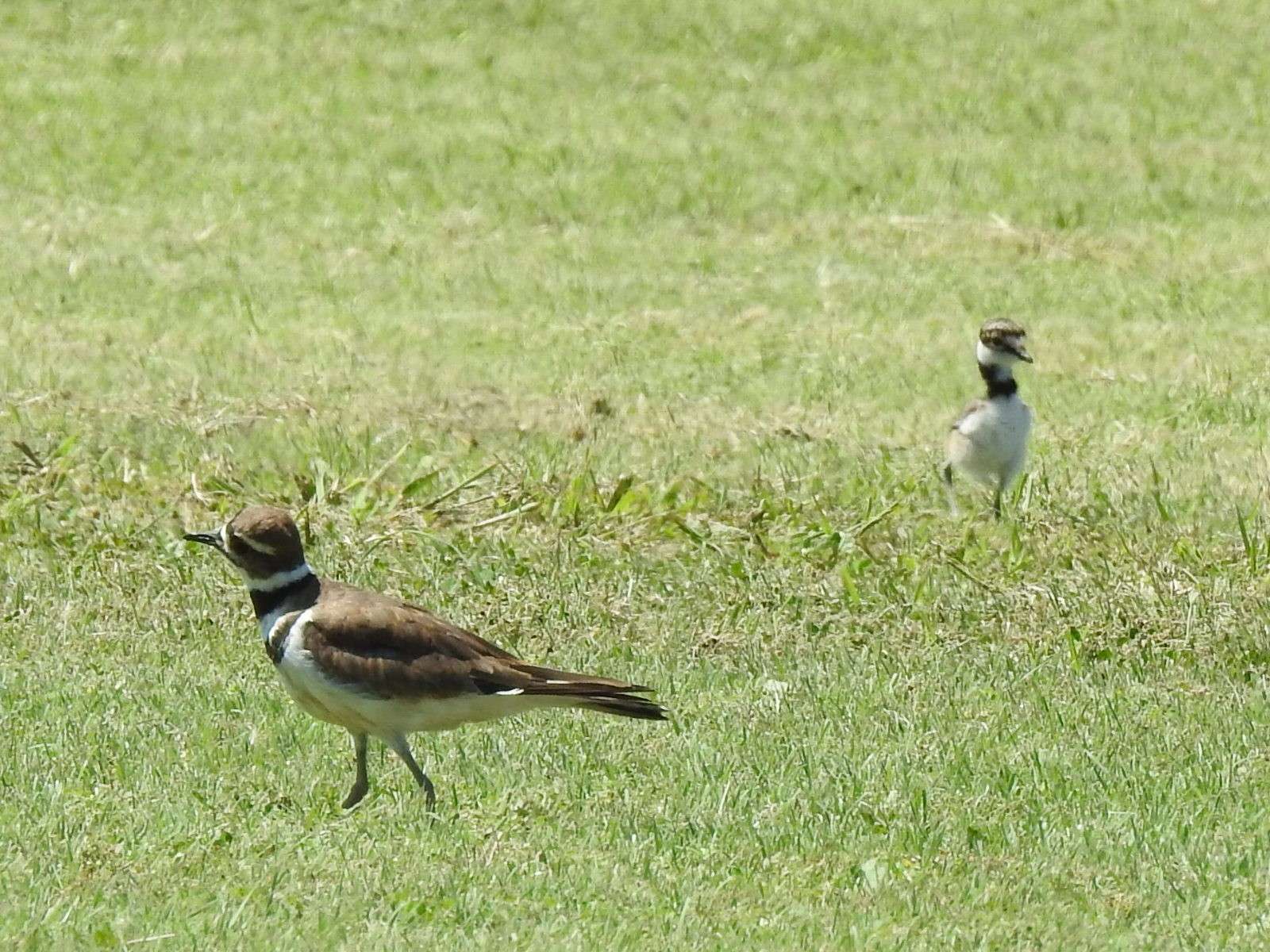
By KAREN MADORIN
Killdeer performing vociferous speed walk--shuffle step--pause actions or broken wing charades add interest to any waterside visit. Who knew two adult killdeer repeating "skree skree skree"s followed by "kill dee" calls as they searched for high protein insects would turn our front lawn into my favorite summer birding site? Add four uncoordinated juveniles to multiply the fun!
This bird’s onomatopoetic "kill-dee" cry makes it obvious why folks commonly call them killdeer.
Swedish biologist Carl Linnaeus’s scientific name for them is more apt—Charadrius vociferus. These noisy birds mastered the art of charade with their clever broken wing imitation designed to lure threats away from nests and young. How crazy something the size of a robin and weighing only ounces can be so loudly dramatic!
At first contact, I thought our pair of lawn picnickers shared the fate of a Colorado chipmunk that wound up in our yard a couple years ago—lost.
Nope, not lost.
Research explains killdeer often exist as non-shore shorebirds. Sure, some live near water, but others support themselves and their young, relying on short grass lawns, pastures, prairies, driveways, parking lots and golf courses to provide sustenance.
Apparently, south WaKeeney meets their home sweet home requirements.
A big parking lot bordered by airport runways bordered by pastures makes up the truck stop. East of Highway 283, six well-trimmed yards tempt these creatures to cross two lanes of scorching asphalt to nourish themselves with succulent insects and other invertebrates.
Think Killdeer Diners, Drive Ins and Dives.
After satisfying dietary needs, these attractive birds focus on nesting. Once again, their 15-acre killdeer range provides essentials so the pair can scrape a ground nest from dirt and rock. This one-time ancient seabed turned farm field turned truck stop plus bonus neighborhood offers dirt and limestone pebbles to convert into an incubator/nursery for four to six buff or beige eggs the pair produces and hopefully hatches.
We haven’t spied their nest, but it exists because this week, two adult killdeer safely led four feathered young across the highway to hunt insects in our neighborhood. We missed the fluffball/toothpick leg stage, but these tweens charm us. Seeing adult killdeer run-walk-shuffle-pause to grab a meal captured our interest. Watching gawky fledglings seek food produces pure comedy.
One did a classic vaudeville face plant one morning when it dove for breakfast. A sibling rolled beak over tail-end while matching wits with an escaping insect. During these antics, the parents gobbled necessary calories while scanning for predators.
Though we haven’t personally triggered a dramatic broken wing charade, cars entering the drive have. The most threatened adult flashes that orange Stranger Danger rump toward the front fender and skews one wing so it appears broken. Often, the performer adds a limp to convince that mechanical behemoth they’re seriously injured easy prey. Once the car passes, a miraculously healed killdeer resumes eating.
We researched this crew to see how much longer we’ll enjoy their company. One source noted young killdeer fly at 25 days. Based on size and feather development, migration day creeps ever closer. Our free entertainment ends soon.
We best gander often to enjoy killdeer watching while these non-shore shore birds dine and perform in our yard.
Karen Madorin is a retired teacher, writer, photographer, outdoors lover, and sixth-generation Kansan.






